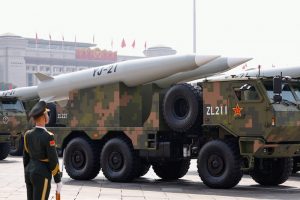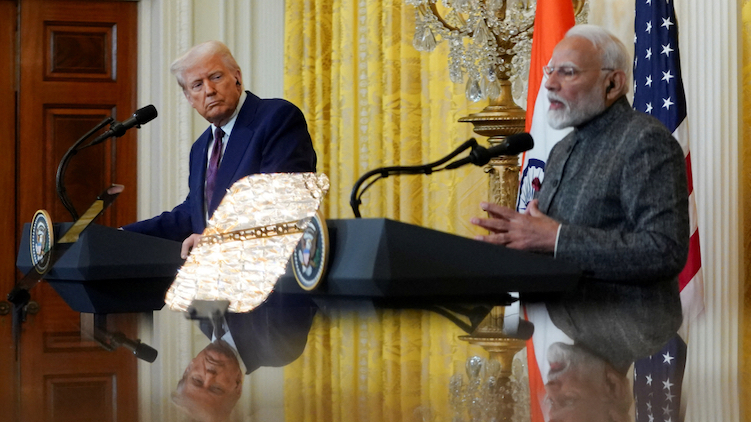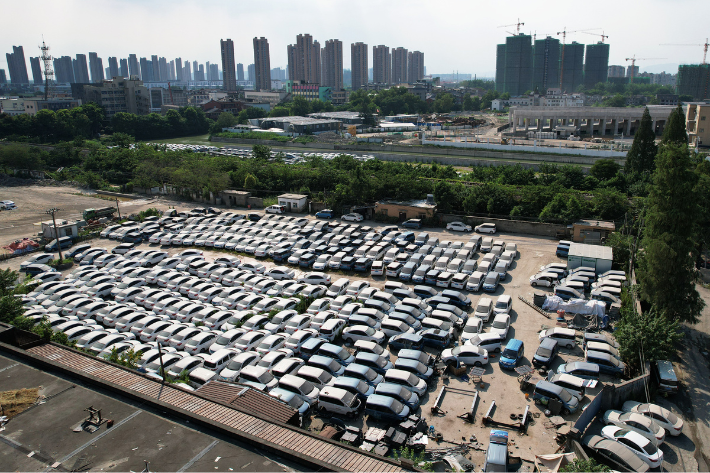More than 240 people have been confirmed dead so far in the aftermath of the deadly crash of an Air India plane in the city of Ahmedabad, and New Delhi officials say they are probing several aspects of the Boeing 787-8 that fell out of air within seconds of taking off.
“We are still verifying the number of dead, including those killed in the building where the plane crashed,” Vidhi Chaudhary, a top state police officer, told Reuters.
She said the death toll was more than 240, revising down a previous toll of 294, in the world’s worst aviation disaster in a decade.
Also on AF: Dreamliner Crash in India is Latest Nightmare for Boeing
It was not immediately clear how many of the dead had been on the aircraft or on the ground. Ahmedabad police chief GS Malik said the bodies recovered could include both passengers and people killed on the ground.
The only known surviving passenger was in seat 11A, next to an emergency exit, officer Chaudhary said, adding that there could be more survivors in hospital.
The survivor — 40-year-old British-Indian national Ramesh Viswashkumar — was seen miraculously walking away from the site of the crash with a phone in his hand, explaining to bystanders that he was on the ill-fated flight. Pictures of his boarding pass were shared by multiple media platforms.
Meanwhile, earlier on Friday, rescue workers had finished combing the medical college hostel on which the plane crashed. Parts of the plane’s fuselage were scattered around the smouldering building, while the tail of the plane was stuck on top.
Officials told the Press Trust of India that temperatures in and around the plane had risen to around 1,000 degrees Celsius, which had made rescue operations “extremely difficult.”
Workers are still searching for missing people and bodies in the buildings, as well as aircraft parts that could help explain why the plane crashed soon after taking off.
Indian Prime Minister Narendra Modi also visited the crash site on Friday, and was briefed by officials on the progress of rescue operations.
Indian officials begin probe
New Delhi, meanwhile, has begun looking into the crash that is confounding aviation experts. CCTV footage showed the plane taking off over a residential area and then, within seconds, disappearing from the screen before a huge fireball could be seen rising into the sky from beyond the houses.
CCTV footage of the Air India Flight 171 crash. Everything seems to be normal up until the last few seconds when the plane apparently loses thrust and lift pic.twitter.com/QBunB4IlZn
— Rahul Srinivas (@whizkidd) June 12, 2025
US aerospace safety consultant Anthony Brickhouse said one problematic sign from videos of the aircraft was that the landing gear was down at a phase of flight when it would typically be up.
“If you didn’t know what was happening, you would think that plane was on approach to a runway,” Brickhouse said.
Indian Civil Aviation Minister Ram Mohan Naidu said that a formal investigation had been initiated by the Aircraft Accident Investigation Bureau.
“The government is constituting a high-level committee comprising experts from multiple disciplines to examine the matter in detail,” he added.
Separately, Indian broadcaster NDTV News reported citing sources that the Indian government was considering grounding its fleet of Boeing’s 787 Dreamliners to conduct a safety review. The report said New Delhi was in talks with US agencies to determine a course of action and would make its final decision on whether or not to ground the fleet, based on its investigation of the crash.
Air India has more than 30 Dreamliners that include the Boeing 787-8 and 787-9 versions. A separate source in Air India told Reuters that there had been no communication so far from the government on the possible grounding.
India’s aviation regulator has, for now, ordered safety checks on the airline’s entire Boeing-787 fleet. And it has also ordered Air India to conduct additional maintenance actions on its Boeing 787-8/9 aircraft equipped with GEnx engines, including a “one-time check” of the take-off parameters before the departure of every flight from midnight of June 15.
The airline has also been instructed to introduce ‘flight control inspection’ — checks to ensure control systems are working properly — in transit inspection, and to conduct power assurance checks, meant to verify the engine’s ability to produce the required power, within two weeks.

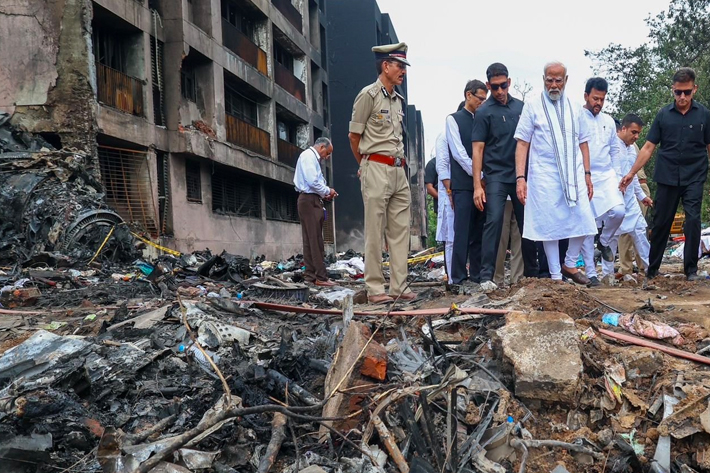
Engine, flaps in focus; one black box recovered
The investigation into the crash, meanwhile, is focusing on the engine, flaps and landing gear, a source with direct knowledge of the matter told Reuters on Friday.
Air India and the Indian government were looking at several aspects of the crash including issues linked to its engine thrust, flaps, and why the landing gear remained open as the plane took off and then came down within moments.
The probe is also looking at whether Air India was at fault, including on maintenance issues, the source said.
A possible bird-hit is not among the key areas of focus, the source said, adding that teams of anti-terrorism experts were part of the investigation process.
Meanwhile, the aviation ministry said that investigators and rescue workers had recovered the digital flight data recorder — one of the two black boxes on the plane — from the rooftop of the building on which the jet crashed.
There was no information on the cockpit voice recorder, the other black box, which is also crucial to the crash probe.
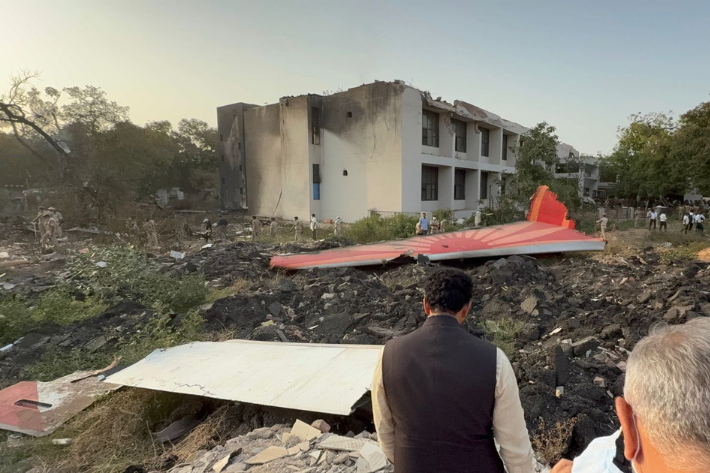
Tata Group, airline stocks under pressure
Meanwhile, Tata Group, which took control of the formerly state-owned Air India in 2022, said it wants to understand what happened.
Investigators from India, the UK and the US have arrived to probe the crash and Tata will be fully transparent about the findings, Tata chairman Natarajan Chandrasekaran said in an internal memo seen by Reuters.
Still, Mumbai-listed stocks of the Tata Group fell by up to 2% in trading on Friday. Shares of Indian airlines also dropped, with stock of IndiGo Airlines’ parent Interglobe Aviation falling nearly 4% and that of SpiceJet slipping nearly 2%.
US-listed shares of Boeing were also down more than 3% on Friday, extending losses from an over 4% fall on Thursday.
The Air India crash was the first such incident for Boeing’s Dreamliner, a wide-body airliner that began flying commercially in 2011. The plane that crashed on Thursday flew for the first time in 2013 and was delivered to Air India in January 2014, Flightradar24 said.
For Air India, the crash will challenge a campaign to restore its reputation and revamp its fleet, after decades of neglect and underinvestment.
Its past accidents include, while under government ownership, a Boeing 737 flight from Dubai in 2010 that overshot the runway at a domestic airport and crashed into a gorge, killing 158 people.
Also, in 2020, an aircraft of its low-cost unit Air India Express skidded off a runway in Kozhikode, killing 21 people. Until Thursday, that was the last fatal plane crash in India, the world’s third largest and fastest growing aviation market.
- Reuters, with additional editing and inputs from Vishakha Saxena
NOTE: Minor edits were made to this report on June 14, 2025.
Also read:
Cargo Ship Carrying 3,000 Cars Ablaze Off Alaska, EV Fire Blamed
China Export Curbs on Rare Earth Magnets: a Trade War Weapon
China Says US Tariffs Severely Affect Its Airlines and Boeing
Second Boeing Jet Flying Back From China to the US, Data Shows
Boeing Flies 737 MAX to Shanghai Amid Uncertainty
China to Allow US Team to Probe Boeing 737 Crash
US Aviation Authority Issues 5G Warning for Boeing 737s
China Ready to Greenlight Return of Boeing 737 MAX
Dreamliner Now a $3.5bn Nightmare for Boeing – The Times










